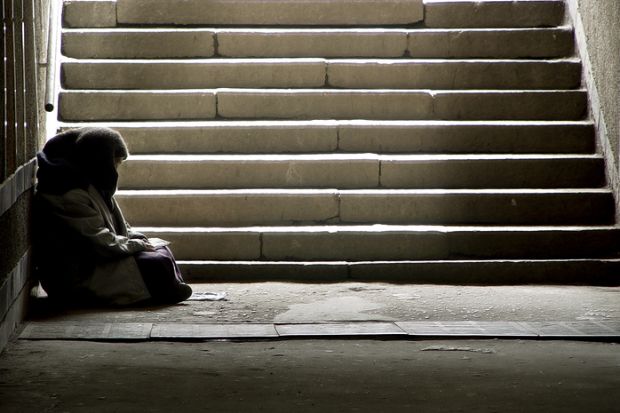There has been a lot of talk this week about how to get UK university students home for Christmas without turning the second wave of the Covid-19 pandemic into a tsunami.
But what about those students who don’t have a home?
As well as their significant effect on jobs, the lockdowns and restrictions caused by the coronavirus have led to a well-documented mental health crisis and increasing levels of sexual and physical abuse in the home.
In addition, the desperation that comes from not wanting to end up on the streets can sometimes lead people to enter into the kind of risky living arrangements where abuse is commonplace. In 2018, the homelessness charity Depaul UK found that 12 per cent of young people sampled had “engaged in sexual activities in exchange for a place to stay”, rising to 23 per cent among those identifying as LGBT.
The same report also highlighted that 23 per cent had stayed with friends of friends and 11 per cent with strangers. In both of these instances, over half reported experiencing some form of harm.
There is no reason to assume that students – many of whom rely on part-time jobs to pay their rent and many of whom live with friends, partners or strangers – should be immune to these trends and risks.
Moreover, there are additional risk factors more specific to those studying at university. Examples include having to defer assessments – thereby potentially losing access to bursaries, loans and university accommodation – and seeing sponsorship withdrawn by organisations no longer in a position to honour their prior commitments.
In the case of international students, there is the added concern of how those struggling financially will be able to afford their living costs should restrictions – in the UK or overseas – prevent them from travelling back to their countries for Christmas, as was the case during the Easter and summer breaks.
Needless to say, it is those students from disadvantaged backgrounds – lower socio-economic households, ethnic minorities, care leavers and disabled students – that are likely to be most at risk of homelessness. At a time when there is, rightly, an ever greater focus on attainment gaps and the systemic biases that facilitate educational disparities, this should only provide further impetus for universities to engage with this important and long overlooked topic.
We already have reason to believe that homelessness affects many UK university students each year. Many university financial support services, particularly those based in high-cost cities, will be aware of students who are or have been homeless. And in 2016, Patrick Mulrenan, a senior lecturer at London Metropolitan University, found that there were 27 homeless undergraduates in just one of LMU’s 10 schools. He predicted that this was likely to be a problem afflicting many more students across the UK capital, and followed up in 2019 with an article calling for a wider study to assess the full extent of homelessness among university students. To my knowledge, however, that call hasn’t yet been taken up.
Universities themselves could carry out surveys of their own students to establish exactly who is homeless (or at risk of becoming homeless). But that would not preclude the need for wider research, to address the fact that while we know that student homelessness is a problem, we have no sense of its scale, nor of its geographic or demographic breakdown. What are the chief causes and consequences? And, crucially, what are the solutions?
There are several universities well placed to undertake this research, including institutions with bespoke housing research units and homelessness research programmes. As with so many things in higher education it comes down to a question of prioritisation and funding.
Still, we should not wait for the results of research before implementing temporary, tentative solutions. Universities could periodically monitor the housing situations of those students identified by their initial surveys as at-risk. They should also ensure that emergency accommodation is available for students in crisis. And they should implement communications strategies to break down the stigma of homelessness and encourage those at risk to seek help.
Those affected, hidden away from discourse and too embarrassed to share their experiences, probably imagine that their predicament is unique. In a sector that lives by research, the lack of attention given to a matter so gravely impacting its most important stakeholders is no longer tenable.
With Covid-19 set to send the general homeless population soaring, the time for silence is over. Mulrenan’s research provided us with a snapshot and called for a spotlight. It is time for the sector to respond.
Ricardo Visinho is the advice manager at the London School of Economics’ students’ union.





